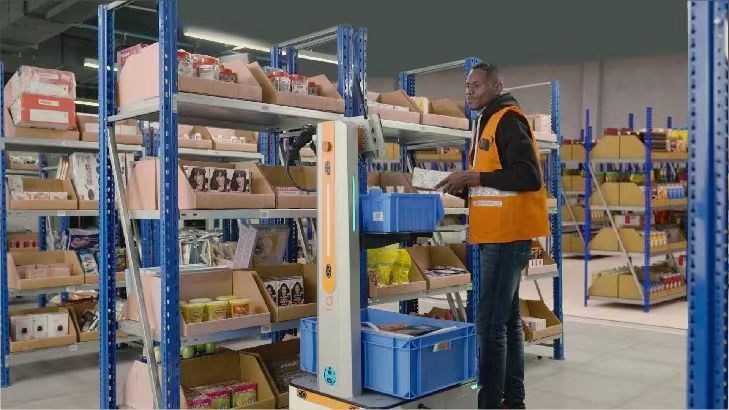© © 2025 Copyright © Youibot Robotics Co., Ltd. All rights reserved.SitemapPrivacy Policy
In recent years, the use of mobile robots in industrial logistics has been gaining significant traction. These advanced machines are designed to increase efficiency, reduce errors, and improve inventory accuracy. With their ability to navigate through warehouse aisles, pick up, and move products from one place to another, mobile robots have revolutionized the way warehouses operate. In this article, we will explore the impact of mobile robots on industrial logistics.
Mobile robots have been making waves in the world of warehouse management due to their ability to increase efficiency, reduce errors, and improve inventory accuracy. These robots are designed to navigate through warehouse aisles and pick up and move products from one location to another. They can also perform other tasks such as inventory counting.
The use of mobile robots has revolutionized the way warehouses operate by reducing the need for manual labor and streamlining processes. With mobile robots, products can be moved quickly and efficiently, allowing for faster processing times and increased throughput. Additionally, these robots can work 24/7, providing round-the-clock support for warehouse operations.

One of the biggest advantages of using mobile robots in inventory management is increased accuracy. Mobile robots use sensors and cameras to identify and locate products, ensuring that the correct product is picked and delivered to the right location. This reduces the likelihood of errors, which can lead to costly mistakes and delays.
Mobile robots also help to increase productivity in inventory management operations. By automating routine tasks such as picking, packing, and restocking, employees can focus on more complex tasks and strategic decision-making. This can lead to better resource allocation and increased profitability for businesses.
Calculating the return on investment (ROI) for implementing mobile robots in supply chain operations is crucial for justifying the initial investment. One factor to consider is the potential increase in throughput and productivity. This can be quantified by measuring the number of units processed per hour or the reduction in processing time.
Another factor to consider is the reduction in labor costs. By automating routine tasks, businesses can save on wages and benefits. Additionally, mobile robots can reduce the risk of injuries and other accidents, potentially lowering insurance costs.
While mobile robots offer many benefits, they can also have an impact on the labor force in logistics. By automating routine tasks, there may be a reduced need for manual labor, potentially leading to job displacement.
However, mobile robots can also create new opportunities for employees to take on more complex roles and responsibilities. For example, employees can be trained to operate and maintain the robots or focus on strategic decision-making.
By striking a balance between automation and human labor, businesses can achieve greater operational efficiency without compromising on quality. If you're looking to streamline your warehouse operations and increase productivity, consider implementing mobile robots in your inventory management system. With their advanced technology and proven success, these machines can help take your business to the next level.
By continuing to use the site you agree to our privacy policy Terms and Conditions.